
NOAA Fisheries works to help all marine mammals protected under the Marine Mammal Protection Act, Endangered Species Act, and other laws and policies.
Marine mammals are mammals that rely on the ocean to survive. They include whales, dolphins, porpoises, seals, sea lions, walruses, polar bears, sea otters, manatees, and dugongs. Some are fully aquatic, such as whales and dolphins. Others, such as seals and sea lions, spend most of their time in water but return to land or ice for activities such as resting or giving birth. Marine mammals are vital to the balance of marine ecosystems and are key indicators of the overall health of the ocean.
With some exceptions, the MMPA prohibits the “take” of marine mammals—including harassment, hunting, capturing, collecting, or killing—in U.S. waters and by U.S. citizens on the high seas. The act also makes it illegal to import marine mammals and marine mammal products into the United States without a permit.
Our work to protect and conserve marine mammal species includes:

Southern Resident killer whale preys on salmon in the Salish Sea near Seattle. Credit: Candice Emmons/NOAA Fisheries
Feature Story
A team of responders assists a young male killer whale stranded at Carmel River State Beach on Tuesday, September 10. The 10-foot whale later died during transport to a laboratory in Santa Cruz. Photo by The Marine Mammal Center under NMFS permit 24359.
Feature Story
A male orca travels quickly near a large cargo ship transiting through the Salish Sea. Image taken under NOAA permit. Credit: Candice Emmons/NOAA Fisheries
Feature Story
A voluntary slowdown of large ships in Puget Sound aims to quiet the waters for endangered Southern Resident killer whales, which use echolocation to hunt. Credit: Kersti E. Muul
Feature StoryAll marine mammal species found in U.S. waters are protected under the Marine Mammal Protection Act, as well as marine mammals listed as endangered or threatened under the Endangered Species Act worldwide. The MMPA prohibits, with certain exceptions, the "take" of marine mammals in U.S. waters and by U.S. citizens on the high seas, and the importation of marine mammals and marine mammal products into the United States.
NOAA Fisheries is charged with protecting whales, dolphins, porpoises, seals, and sea lions. Walrus, manatees, sea otters, and polar bears are protected by the U.S. Fish and Wildlife Service. The Marine Mammal Commission provides independent, science-based oversight of federal agencies’ policies and actions addressing human impacts on marine mammals and their ecosystems. Additionally, the Animal and Plant Health Inspection Service, under the Department of Agriculture, is responsible for regulations managing marine mammals in captivity under the Animal Welfare Act.
NOAA Fisheries scientists collect and analyze data on the marine mammal populations we manage. We gather information on a species' or stock’s population structure, life history characteristics and productivity rates, abundance, and threats—particularly those caused by human activities. We publish this information, and our analyses, in annual stock assessment reports.
The MMPA generally prohibits the "take" of marine mammals (e.g., harassment, hunting, capturing, collecting, or killing). The act also makes it illegal to import or export marine mammals and marine mammal products into or out of the United States without a permit or other applicable authorization. NOAA Fisheries authorizes take for certain activities, for example, scientific research, commercial and educational photography, and incidental take during commercial fishing operations and other non-fishery commercial activities like construction projects.
Fisheries bycatch is the greatest direct cause of marine mammal death and injury. To address this threat, NOAA Fisheries develops and implements take reduction plans — plans to mitigate marine mammal death and serious injury in commercial fisheries to help stocks recover. Teams of scientists, members of the fishing industry, representatives of environmental groups, and resource managers work together to develop these plans. The teams design each plan to reduce bycatch within a specific timeframe through a combination of voluntary and regulatory measures.
The MMPA prohibits killing or injuring marine mammals, except under certain circumstances. This program provides an annual exemption for the incidental mortality or injury of marine mammals that occurs during commercial fishing. This exemption does not include marine mammal stocks listed as endangered or threatened under the Endangered Species Act —incidental take of these species must be permitted separately .
Sometimes marine mammals are found in distress—sick, injured, or dead. The cause is often unknown, but sometimes it is shown to be disease, ship strikes, entanglements in marine debris or fishing gear, harmful algal blooms, pollution exposure, or other trauma. NOAA Fisheries works with trained partners in every coastal state to respond to reports of marine mammals in distress, assess the animals’ condition, and (in certain cases) try to rehabilitate or move them. If a marine mammal is dead, responders may perform a necropsy—an animal autopsy—to learn more. The valuable biological information collected during stranding responses helps us make better management decisions for marine mammal conservation. Marine mammals are mammals like us, and several species live in coastal waters that people use, and forage on some of the same fish that people consume. As such, they can help serve as indicators of ocean health, giving insight into larger environmental issues, which may also have implications for human health and welfare .
When marine mammal stranding rates are higher than usual, the MMPA sets out a process to evaluate strandings and determine whether they should be designated as unusual mortality events, which triggers a specific investigative response. UMEs can be caused by either natural or human factors, such as disease outbreaks, biotoxins from harmful algal blooms, oceanographic events, pollution, vessel strikes, and entanglement in fishing gear or marine debris.
Learn how NOAA Fisheries protects all marine mammals under the Marine Mammal Protection Act.
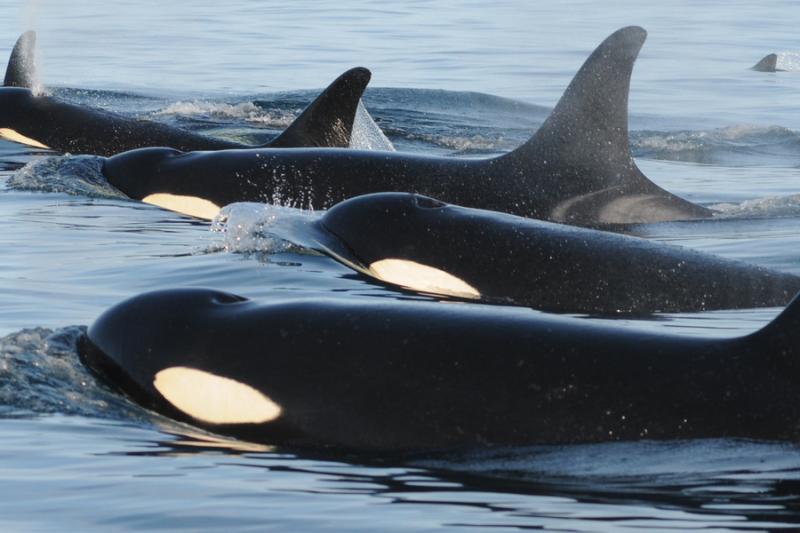
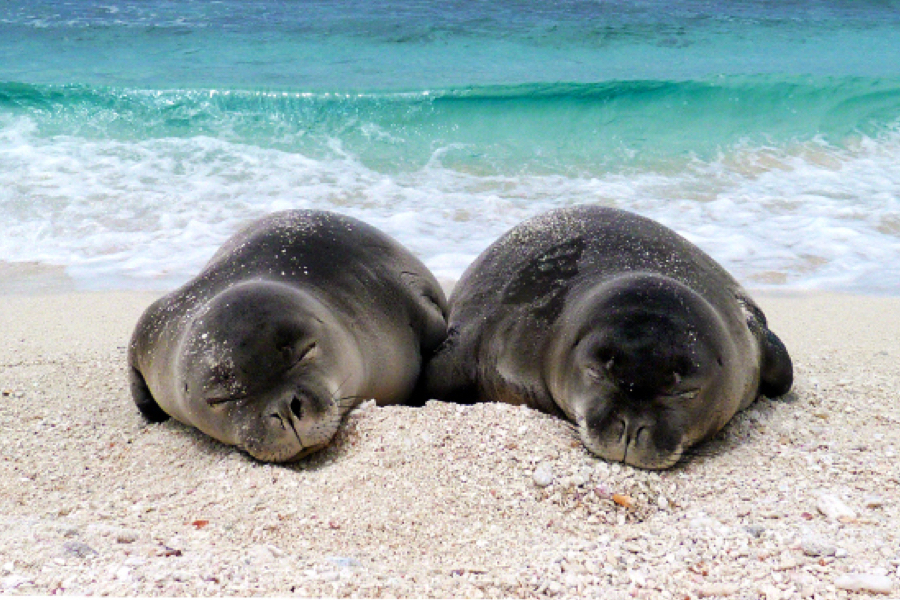 Gallery Default Thumbnail Image" />
Gallery Default Thumbnail Image" />
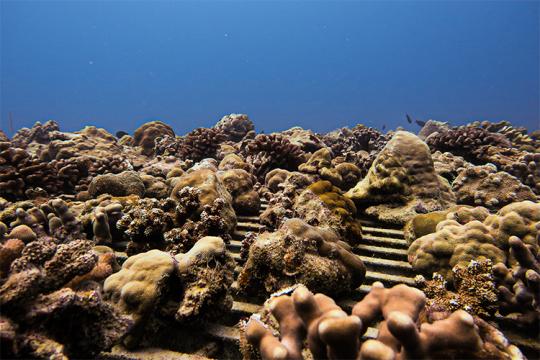
Coral nurseries are one tool NOAA uses to restore reefs, which are vital habitats for many managed seafood species. Credit: NOAA Fisheries
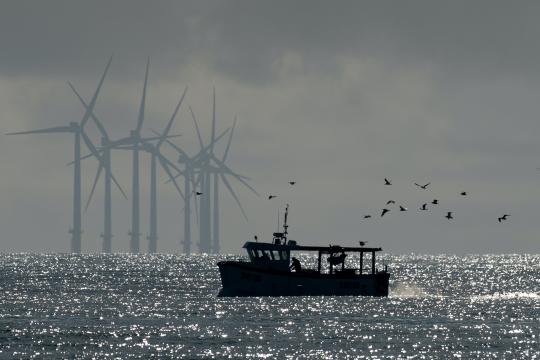 8 offshore windmills tower over the horizon. In the foreground, a small boat open-decked boat with a flat roof is silhouetted against a shining sea" width="540" height="360" />
8 offshore windmills tower over the horizon. In the foreground, a small boat open-decked boat with a flat roof is silhouetted against a shining sea" width="540" height="360" />
A small fishing vessel near wind turbines. Credit: Bob Brewer on Unsplash
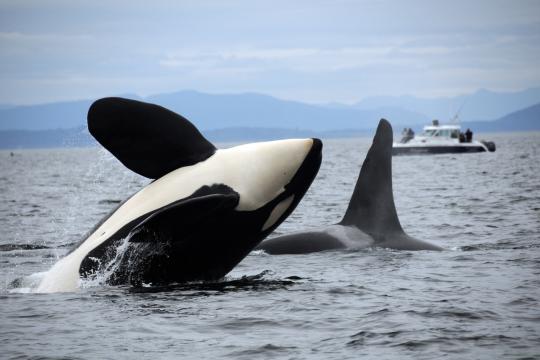
A Southern Resident killer whale leaps out of the water. Credit: Candace Emmons
Three federal agencies share responsibility for the protection and conservation of marine mammals.
We are responsible for managing the taking of marine mammals through permits and authorizations. The Marine Mammal Protection Act generally prohibits the “take” of marine mammals—including harassment, hunting, capturing, collecting, or killing—in U.S. waters and by U.S. citizens on the high seas. The act makes some exceptions, though:
The prohibition generally does not apply to Alaska natives who live on the Alaskan coast. The MMPA contains provisions allowing for take for subsistence use, or to create and sell handicrafts and clothing without permits or authorizations.
We are responsible for developing and implementing conservation plans for marine mammal species that are designated as "depleted". Species or populations are considered depleted if they are below their optimum sustainable population level, or are listed as endangered or threatened under the Endangered Species Act .
Fisheries bycatch is the greatest direct cause of marine mammal injury and death. NOAA Fisheries is engaged in many conservation and management actions to reduce the death or injury of marine mammals from commercial fishing operations.
NOAA Fisheries implements the Marine Mammal Authorization Program, which provides exemptions to certain commercial fisheries for the accidental injury or death of marine mammals during fishing operations. The MMPA mandates that each fishery be categorized according to how common these deaths or injuries are there: frequent, occasional, or only remotely likely. This information is published annually in the “list of fisheries.” A vessel owner or operator (or a fisherman working without a vessel) who works in certain categories on the list must register with the Marine Mammal Authorization Program. The program also requires that any death or injury of a marine mammal during commercial fishing operations must be reported to NOAA Fisheries.
NOAA Fisheries develops and implements take reduction plans to minimize bycatch of strategic marine mammal stocks . Each plan is designed to minimize serious injuries and deaths through a combination of voluntary and regulatory measures.
To reduce marine mammal bycatch, NOAA Fisheries works with the fishing industry to modify fishing gear and fishing practices. Fishermen and fishery observers report marine mammals’ interactions with fishing gear. Scientists and managers then work with fishermen and gear designers to find ways to reduce marine mammal injury and mortality.
We are also working to reduce marine mammal bycatch associated with international commercial fishing by holding nations exporting fish and fish products to the United States to the same standards as U.S. commercial fishing operations. Nations wishing to export fish and fish products to the United States have until 2022 to meet similar marine mammal protection standards to those in place for U.S. fisheries.
NOAA Fisheries coordinates the Marine Mammal Health and Stranding Response Program, which works with trained partners in every coastal state to respond to reports of animals in distress and assess their condition when they are found sick, injured, or dead. Data are collected for inclusion in a national database, contributing to our understanding of marine mammal communities and helping us monitor the health of their populations.
The program has the following components:
Feeding or closely interacting with wild animals changes their behavior and puts them at risk. Under the MMPA, it is illegal to feed, attempt to feed, or otherwise harass marine mammals in the wild. There are many ways to view marine mammals responsibly and enjoy their natural behaviors—we have developed regulations and guidelines with specific recommendations and distances for viewing whales, dolphins, porpoises, seals, sea lions, and other marine animals. Our law enforcement officers work with the U.S. Coast Guard and state natural resource enforcement agencies to ensure compliance and take action when these laws are broken.
Conservation and Management in Protecting Marine MammalsNOAA Fisheries works to protect, conserve, and manage marine mammals through permits and authorizations, take reduction plans, and more.
Science is critical to understanding the needs and status of marine mammal populations, as well as the threats to their health and well-being. NOAA Fisheries pursues a scientific understanding of these topics because it is essential to conservation efforts. Examples of our work include assessing and monitoring marine mammal stocks, researching disease agents (e.g., pathogens, parasites, and harmful algal blooms), and developing gear modifications to reduce entanglement and bycatch.
The Marine Mammal Protection Act defines a marine mammal stock as a group of individuals “of the same species or smaller taxa in a common spatial arrangement that interbreed when mature.” Assessing stocks gives us valuable information on marine mammal population trends, productivity rates, estimates of human-caused mortality and other sources of serious injury, and more. It allows us to evaluate the effectiveness of conservation and recovery measures, and to adjust management approaches as needed.
Stock assessment reports for all marine mammals in U.S. waters were first required when the MMPA was amended in 1994. Since that time, all stocks have been reviewed at least every three years or as new information becomes available. Stocks that are designated as strategic are reviewed annually. Each draft stock assessment report is peer-reviewed by one of three regional Scientific Review Groups and revised and published after a public comment period.
Data collection, analysis, and interpretation are conducted through marine mammal research programs at each of our Fisheries Science Centers and by other researchers.
Ship-based and aerial surveys are critical to achieving our marine mammal population assessment goals, which include estimating abundance and examining trends and human impacts relative to management objectives. Our science centers conduct and manage a limited number of marine mammal surveys each year, often with external collaborators. The number of surveys depends on funding and available ship time and flight time.
The efficiency of sound travel under water has led to increasing concern over how artificial sound potentially impacts the underwater environment. Our scientists support and conduct research to examine these potential impacts on marine animals and to increase understanding of:
Understanding climate change impacts on living marine resource distribution and occurrence patterns is a high priority for NOAA Fisheries. We know relatively little about the effects of global and regional climate dynamics on species distribution, abundance, and prey availability. The Arctic in particular is a window to changing climate patterns and a suitable biological laboratory to observe and record the impacts of receding sea ice, warming sea surface temperatures, and variable energy flow. These impacts all affect key marine ecosystem functions and native tribal communities that depend on Arctic resources for their livelihood and sustenance.
Reducing bycatch of protected species can improve the recovery of marine mammals. Together with the fishing industry, we work to minimize bycatch by developing technological solutions and changes in fishing practices. These include gear modifications, avoidance programs, and/or improved fishing practices in commercial and recreational fisheries.
Marine mammal health is a key indicator of the overall health of our oceans. We and our stranding network partners perform vital research into causes of death and emerging diseases in marine mammals. This enables biologists to monitor the health of species populations and identify threats. They perform necropsies on freshly dead animals whenever possible. Blood serum, blubber, and tissue tests can provide information on contaminant loads and pathogens. During examinations, biologists also look for clues such as evidence of blunt force trauma (which can be an indicator of ship strikes) or signs of entanglement and fishery interactions. Data from stranding events are collected in a national database, and the information is used to increase our understanding of marine mammal communities and to monitor the health of their populations.
Marine mammals can often be identified by markings such as blemishes, fin nicks and notches, and scars. Several research programs rely on these markings—visible in images obtained during photo-identification surveys—to distinguish and catalog individual animals.
Species valuation studies enable us to assess the national benefits derived from protected species including marine mammals such as whales, porpoises, and sea lions. Protecting a species through laws and policies implies that society considers these species to be valuable. Economics can be used to assess the value that people have for preserving a species for future generations regardless of whether they ever view the species or not.
Learn about other advanced technologies used by our scientists—including drones, satellite tagging and tracking, and genetic research—to study marine mammals and other ocean animals.
Marine Mammal Protection ScienceStock assessments, field surveys, and other scientific research are vital to understanding the needs of marine animals and threats to their health.
Conservation groups; academia; tribal nations; and federal, state, and local governments all make important contributions to the protection and conservation of marine mammals. We collaborate with these organizations to minimize harmful effects on marine mammals and work toward their recovery. Together, we and our partners develop and implement conservation strategies, review and make recommendations on activities to help reduce harm to marine mammals, and provide grants to support marine mammal stranding response around the country. Some of our key partners in protecting marine mammals include:
Every year there are thousands of reports of stranded marine mammals throughout the United States. We rely on a national network of stranding responders to respond to these events, investigate, and collect valuable data. Stranding networks have been established in every coastal state and are largely volunteer. Through a national coordinator and five regional coordinators , NOAA Fisheries oversees, coordinates, and authorizes these activities and trains personnel.
Public contributions help fund some of our network partners, and some receive program funds from parent agencies or organizations. As network participants, they are eligible to compete for federal funds through the Prescott grant program to support special studies or supplement basic operations.
Co-management involves collaboration between the federal government and Alaska Native organizations to conserve marine mammal populations in Alaska.
Co-management efforts have integrated the field skills and traditional/indigenous knowledge of Alaska Native hunters with the scientific and technological expertise of NOAA scientists to better our understanding of marine mammals: their stock structure, status, trends, movement and habitat-use patterns, responses to climate change, animal health and condition, contaminants, and disease. Sampling of Native-harvested animals for scientific purposes (biosampling) has provided tissues for a variety of studies. Education and outreach efforts have trained hunters in good hunting practices and biosampling, and familiarized Alaska Native youth with cultural and subsistence traditions. Such efforts contribute significantly to marine mammal conservation and the maintenance of subsistence cultures.
NOAA's Partners in Protecting Marine MammalsLearn how NOAA Fisheries partners with government agencies, tribal nations, and other organizations to protect and conserve marine mammals.